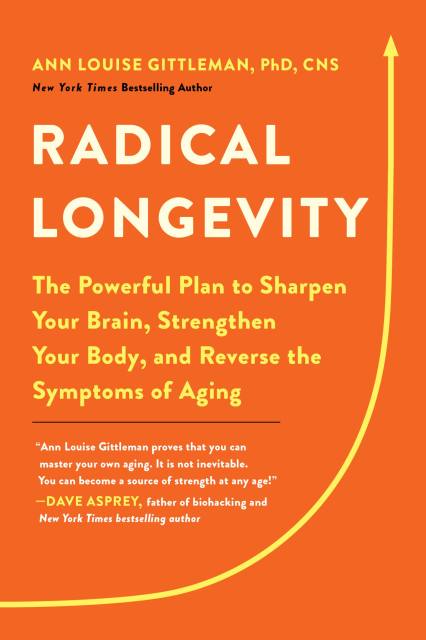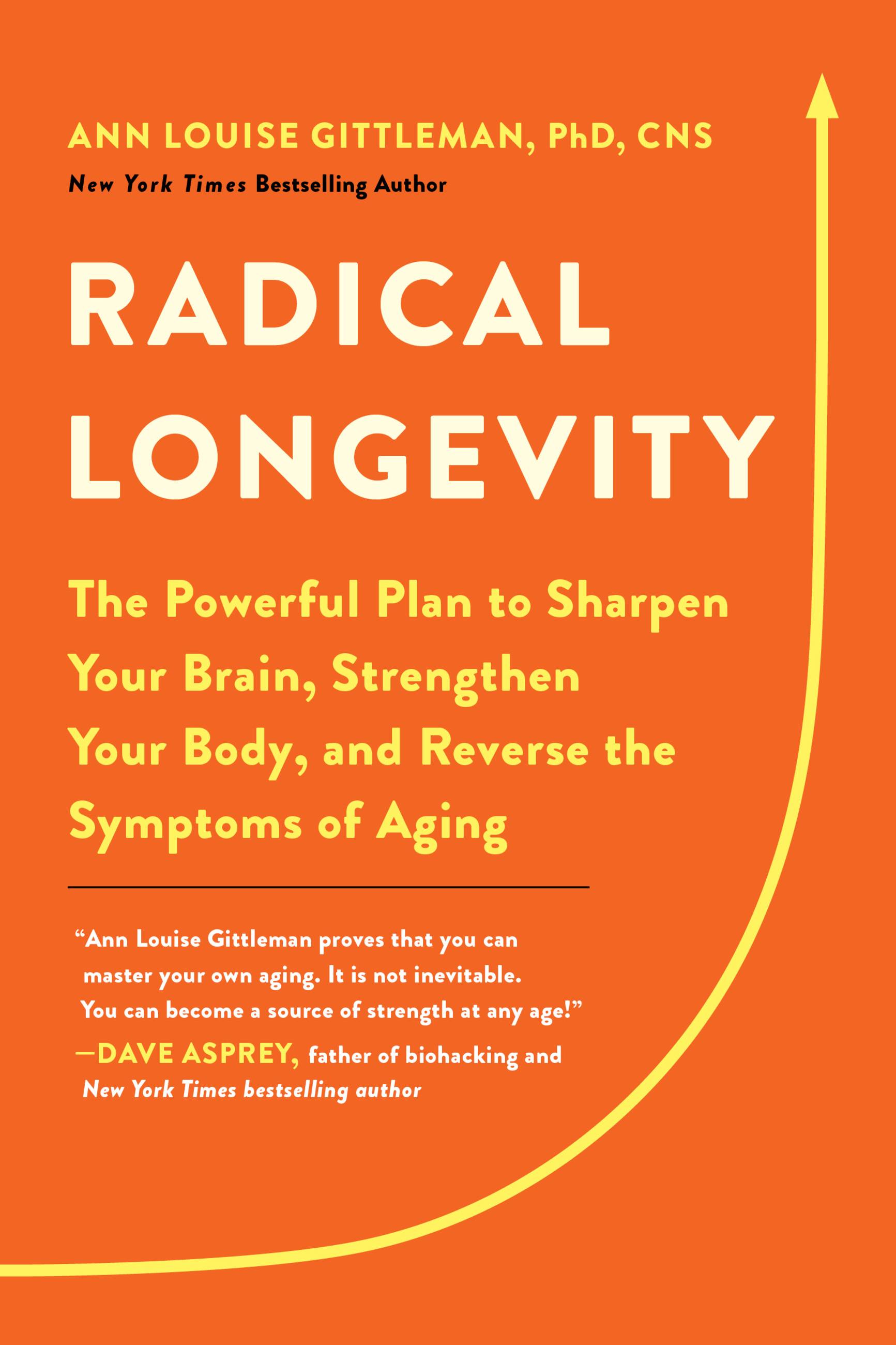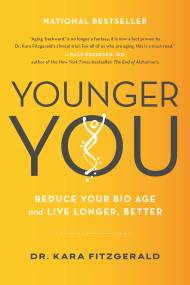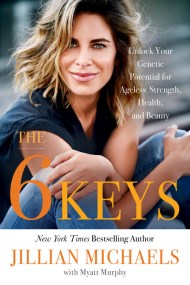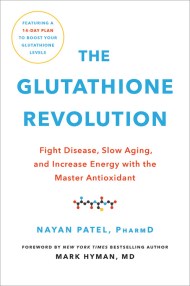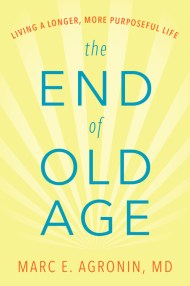By clicking “Accept,” you agree to the use of cookies and similar technologies on your device as set forth in our Cookie Policy and our Privacy Policy. Please note that certain cookies are essential for this website to function properly and do not require user consent to be deployed.
Radical Longevity
The Powerful Plan to Sharpen Your Brain, Strengthen Your Body, and Reverse the Symptoms of Aging
Contributors
Formats and Prices
Price
$17.99Price
$22.99 CADFormat
Format:
- Trade Paperback $17.99 $22.99 CAD
- ebook $11.99 $15.99 CAD
- Hardcover $28.00 $35.00 CAD
- Audiobook Download (Unabridged) $27.99
This item is a preorder. Your payment method will be charged immediately, and the product is expected to ship on or around May 10, 2022. This date is subject to change due to shipping delays beyond our control.
Also available from:
A New York Times bestselling author and cutting-edge health expert shares her nutrition-based plan for healthy, vibrant longevity.
Welcome to a Radical new view of aging—one that defies conventional wisdom and redefines the aging process with resilience, vitality and grace. You’ll discover the most advanced program that staves off the effects of aging, which includes how to release a lifetime of accumulated toxins and deficiencies—and how to correct and reverse their effects with targeted foods, critical lifestyle tweaks, peptides and signaling molecules for cellular regeneration.With her trademark no-nonsense style, Ann Louise Gittleman champions a paradigm shift in which your biology is not your biography. By utilizing epigenetics to slow and reverse many of the most worrisome aging conditions, you can preserve your “youth span” and enhance your immunity, heart, brain, muscles, joints, skin, and hair. You can even revitalize your sex drive!
Based on decades of experience and research in breakthrough age-defying and restorative medicine, Radical Longevity will forever change what you think you know about aging. Inside you’ll discover:
- The most essential vitamins, minerals and hormones to reclaim youthful immunity
- The transformative Radical Longevity Power Plan and 5 Day Radical Reset to soothe the gut and revitalize the liver
- How to manipulate your metabolism
- The Cinderella mineral to help prevent memory loss and reverse Alzheimer’s
- How to make your body produce up to fifty percent more “Youth Defying Stem Cells”
- The #1 brain-aging hazard hiding in your home, and how to activate your best self-defense
- The unexpected “forbidden” food that makes your skin, joints, eyes, arteries, and brain feel years younger and much more…
-
“Ann Louise Gittleman proves that you can master your own aging. It is not inevitable. You can reverse Alzheimer’s. You can become a source of strength at any age!”Dave Asprey, father of biohacking and 4x New York Times bestselling author
-
Praise for Ann Louise Gittleman:Mark Hyman, MD, medical director of Cleveland Clinic's Center for Functional Medicine, and 13-time #1 New York Times bestselling author
"I deeply respect and honor the work of Ann Louise Gittleman, whom I consider as a teacher, as well as what she has done to bring intelligence to the world of nutrition."
-
"Ann Louise Gittleman is a dynamic pioneer and leading authority in nutrition, health, and wellness. She is a beacon of light and inspiration for millions of people who seek advanced healing information that genuinely transforms their lives."Anthony William, #1 New York Times bestselling author of Cleanse to Heal
-
"Ann Louise Gittleman has demonstrated extraordinary leadership when it comes to reporting on the fundamental causes of illness and disease. Whether it's parasites in Guess What Came to Dinner? or environmental toxins in The Fat Flush Plan or toxic EMF or RF in Zapped, she reaches the hearts of the public by not only demonstrating what causes illness, but she also offers solutions on how to fix them! I'm proud to be one of her colleagues."Stephen Sinatra, MD, FACC, integrative cardiologist, coauthor of The Great Cholesterol Myth, Revised and Expanded
-
"Most people have been brought up believing that old age and decline are inevitable. And that becomes their experience. But there is another way. A far more pleasurable way to grow older while maintaining strength, vitality, and joy. That is the message of Radical Longevity— a book whose time has truly come.”Christiane Northrup, MD, NY Times bestselling author of Goddesses Never Age, Women’s Bodies, Women’s Wisdom and The Wisdom of Menopause.
-
"I have known Ann Louise for several years now and am constantly blown away by her depth of knowledge and her unique yet natural approach to tackling true health from an extremely unique yet scientifically informed perspective. You will highly benefit from her wisdom, I guarantee."Ben Greenfield, founder of Ben Greenfield Fitness & Kion
-
"Rather than accepting conventional wisdom, Ann Louise is always lightyears ahead of it. Every time I read her books or attend her talks, I discover something new She never stops researching, never stops learning, and never stops advancing our field. I am continually awed by the depth and scope of her knowledge."Dr. Kellyann Petrucci, New York Times bestselling author, Dr. Kellyann's Bone Broth Diet
-
"From Fat Flush to detox, Ann Louise Gittleman is a trailblazer whose impeccable, groundbreaking research and knowledge paved the path for nutritionists today. As she has for the past few decades, Gittleman continues to inspire, motivate, and challenge me today."JJ Virgin, four-time New York Times bestelling author
-
"When it comes to wellness through nutrition, Ann Louise Gittleman not only pioneered the field, she continues to be ahead of her time and on top of the game. At First for Women, we rely on Gittleman to alert us to the newest scientific studies with the most urgent relevance for our readers--and she always delivers."Carol Brooks, editor-in-chief of Woman's World and First for Women magazines
-
"Ann Louise Gittleman, PhD, CNS is a visionary and pioneer in the world of natural healing. Her best-selling books have revolutionized natural medicine and Ann Louise continues to innovate."Izabella Wentz, PharmD, FASCP, -Functional Pharmacist and #1 New York Times bestselling author of Hashimoto's Protocol and Hashimoto's the Root Cause
-
"A powerful 'Force of Nature' in the healing community, Ann Louise is used to being on the cutting edge. Want to see what the experts will be saying in 25 years? Simply see what she is saying NOW!"Jacob Teitelbaum, MD, internationally acclaimed author of From Fatigued to Fantastic
-
"A long-time guiding light in the world of nutritional medicine, Ann Louise continues to be The First Lady of Nutrition and someone I can always count on for the best information for my patients, my readers, and me. Not only is she knowledgeable and a pioneer in the field, but is a truly caring person who is dedicated to changing the world, one body at a time. I'm proud to call her my friend."Hyla Cass, MD, author of 8 Weeks to Vibrant Health
-
"I always admired her passion for healing for all, her desire to look deeper and her healing wisdom."Raphael Kellman, MD, of the Kellman Center for Functional and Integrative Medicine and author of The Microbiome Breakthrough
-
"I am a great fan of Ann Louise's body of work! I am particularly happy that she has tackled the timely topic of longevity and how our bodies are being sabotaged by our toxic environment and how to easily and safely address this through simple lifestyle changes."Robyn Openshaw, founder of GreenSmoothieGirl.com
-
"Ann Louise has always been one of my favorite go-to nutritionists. Her Fat Flush Plan and other programs, supplements, and test kits have paved the way for a whole new generation of health and environmentally like-minded advocates and activists. She is STILL a superstar in our changing world and we are all very grateful for her tireless efforts to bring the most cutting-edge wisdom to a world that desperately needs it."Donna Gates, internationally bestselling author of The Body Ecology Diet
-
"I have known Ann Louise for nearly 40 years, and I especially commend her for 'keeping the light burning,' with integrity, devotion, truth and a knowledge that surpasses most people's understanding of nutrition from the traditional side as well as the esoteric energetic side. Her work in nutrition has been eye opening to many, as she led the way as the 'Queen' of Nutrition! Our teacher, the great healer, Dr. Hazel Parcells often spoke of Ann Louise as a Leader in the field of nutrition. I am honored to know her not only as a colleague, but a dear friend."Linda Lancaster, ND, PhD, author of Harmonic Healing
-
"I have always wanted to meet the woman who has also written over 35 books and has been such an icon for so many decades. I am honored that we have become friends as well as treasured colleagues."Cherie Calbom, MS, The Juice Lady
-
"Ann Louise Gittleman is a wonderful woman, not only for her kindhearted spirit, but her dedication to getting to the root causes of health issues for decades. She was practicing and preaching 'functional medicine' before it was even a term!"Evan Brand, certified functional medicine practitioner
-
"I admire Ann Louise Gittleman so much. She has touched on every major health issue of our time to help guide people in the right direction towards the underlying root causes of their health issues. She is a clear and responsible voice in a time when people more than ever need proper self-guidance, self-reliance and education about their health. I learn so much every time I speak to her--I trust and follow her every word!"Wendy Myers, FDN-P, myersdetox.com
-
"Ann Louise Gittleman is always light years ahead of others in her field. She is one of my all-time favorite health influencers!"Dr. Peter Osborne, bestselling author of No Grain No Pain
- On Sale
- May 10, 2022
- Page Count
- 336 pages
- Publisher
- Hachette Go
- ISBN-13
- 9780738286150
Newsletter Signup
By clicking ‘Sign Up,’ I acknowledge that I have read and agree to Hachette Book Group’s Privacy Policy and Terms of Use
